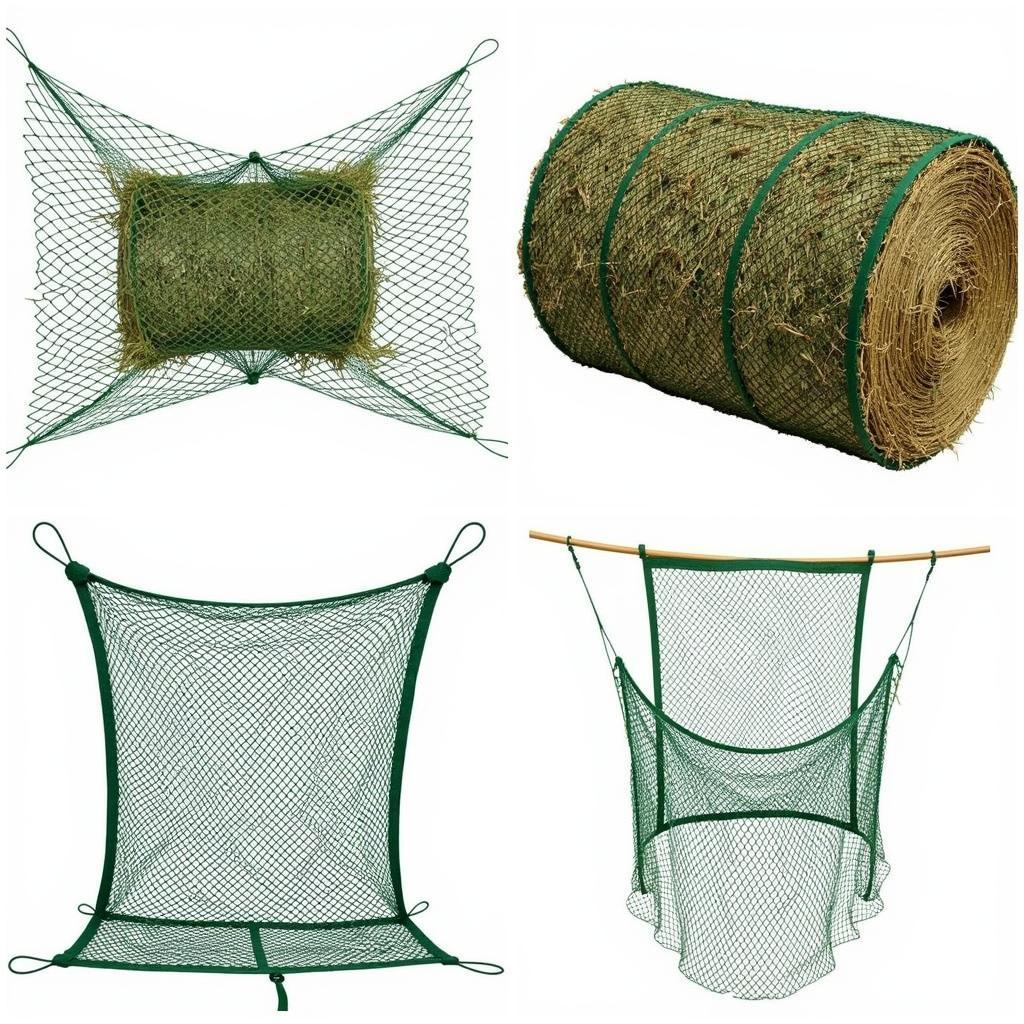Slow hay feeders for horses are essential for mimicking natural grazing patterns, promoting digestive health, and reducing boredom. They regulate hay consumption, preventing overeating and minimizing waste. Let’s dive into the world of slow feeders and explore the best options for your equine companion.
Why Use Hay Slow Feeders for Horses?
Horses evolved to graze for the majority of the day. Providing constant access to forage is crucial for their physical and mental well-being. Hay slow feeders help to extend feeding time, more closely resembling natural grazing behavior. This has numerous benefits, including reducing the risk of colic and ulcers, maintaining a healthy weight, and minimizing behavioral problems associated with boredom and hunger.
Traditional hay feeding methods, such as piling hay on the ground or using large, open feeders, often lead to rapid consumption and significant hay wastage. Slow feeders, by restricting access to the hay, encourage slower eating, allowing horses to savor their meal and extract more nutritional value. This is particularly important for easy keepers or horses prone to weight gain.
Different Types of Hay Slow Feeders for Horses
Several types of slow hay feeders are available on the market, each with its own advantages and disadvantages. Choosing the right one depends on your horse’s individual needs, your budget, and your management style. Some popular options include:
- Hay Nets: A cost-effective and portable solution, hay nets come in various sizes and mesh configurations. Smaller mesh sizes slow down consumption more effectively.
 Various Hay Nets for Horses You can find quality hay nets at our page on hay ring for horses.
Various Hay Nets for Horses You can find quality hay nets at our page on hay ring for horses. - Hay Bags: Similar to hay nets, hay bags offer a convenient way to slow down hay consumption. They are often made of durable fabric and can be hung in stalls or paddocks.
- Box Feeders: These feeders are typically made of metal or plastic and have a grated or mesh bottom that restricts access to the hay.
- Slow Feed Hay Balls: These large, round feeders are designed to hold an entire bale of hay. Horses must pull hay through small openings, effectively slowing down their eating.
How to Choose the Right Hay Slow Feeder
Choosing the best hay slow feeder for horses involves considering several factors. Is your horse prone to getting its hooves caught? A hay net might not be the best option. Do you have multiple horses sharing a paddock? A large slow feed hay ball or multiple smaller feeders might be necessary.
Think about the size and mesh size of the feeder. The smaller the mesh, the slower the eating pace. Also, consider the durability and safety of the feeder. Ensure it is made of sturdy materials that can withstand wear and tear. “Choosing the right slow feeder can significantly impact your horse’s well-being,” says Dr. Emily Carter, Equine Nutritionist. “It’s about finding the perfect balance between slowing down consumption and ensuring your horse can comfortably access the hay.” homemade slow hay feeders for horses offer a budget-friendly way to control your horse’s diet.
Making the Transition to Slow Feeders
Introducing a slow feeder should be done gradually. Start by offering hay in both the traditional method and the slow feeder, allowing your horse to adjust to the new feeding system. Monitor your horse’s hay intake and body condition to ensure they are receiving adequate nutrition. For more specialized feeding options, check out our article on automatic hay feeder for horses. “It’s crucial to observe your horse’s behavior during the transition,” advises John Miller, Certified Horse Trainer. “Some horses adapt quickly, while others may take a little longer to get used to the new feeding method.”
Conclusion
Hay Slow Feeders For Horses are a valuable tool for promoting digestive health, reducing boredom, and mimicking natural grazing behaviors. By carefully considering your horse’s individual needs and choosing the right type of feeder, you can enhance their overall well-being and ensure they receive the proper nutrition they need. Choosing a slow feeder is a smart investment in your horse’s health and happiness. Don’t forget to check out our other resources on slow hay feeders for horses for more in-depth information.
FAQ
- How long does it take a horse to get used to a slow feeder?
- Can slow feeders be used for all types of hay?
- How do I clean a hay slow feeder?
- Are slow feeders suitable for horses with dental problems?
- How much hay should I put in a slow feeder?
- Can slow feeders be used outdoors?
- Where can I buy hay slow feeders?
Common Scenarios and Questions
- Scenario: My horse is pawing at the slow feeder. Question: What does this mean, and what should I do?
- Scenario: My horse isn’t eating enough hay from the slow feeder. Question: How can I encourage them to use it?
Further Reading and Resources
You might also be interested in learning more about grazing bits for horses.
Contact us for support: Phone: 0772127271, Email: [email protected] or visit us at QGM2+WX2, Vị Trung, Vị Thuỷ, Hậu Giang, Việt Nam. We have a 24/7 customer service team.